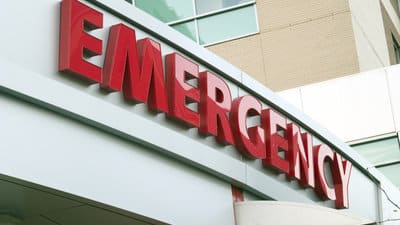Choosing Wisely is an initiative by the American Board of Internal Medicine that solicits evidence-based recommendations by other specialty associations to identify tests or procedures in their field which are unnecessary. The following are a set of five recommendations that were provided by the American College of Emergency Physicians:
- Avoid CT of the head in asymptomatic adult patients in the emergency department with syncope, insignificant trauma and a normal neurological evaluation. Syncope (passing out or fainting) or near syncope (lightheadedness or almost passing out) is a common reason for visiting an emergency department and most of those visits are not serious. Many tests may be ordered, but the decision to order them should be guided by information obtained from the patient’s history or physical examination.
- Avoid CT pulmonary angiography in emergency department patients with a low-pretest probability of pulmonary embolism and either a negative Pulmonary Embolism Rule-Out Criteria (PERC) or a negative D-dimer. Advances in medical technology have increased the ability to diagnose even small blood clots in the lung. Now, the most commonly used test is known as a CT pulmonary angiogram (CTPA). This should not be ordered in patients with a low pretest probability of PE and a negative PERC assessment or negative D-dimer test.
- Avoid lumbar spine imaging in the emergency department for adults with atraumatic back pain unless the patient has severe or progressive neurologic deficits or is suspected of having a serious underlying condition, such as vertebral infection or cancer with bony metastasis. Low back pain without trauma is a common presenting complaint in the emergency department. The absence of trauma or red flags on clinical exam obviates the need to order L-spine imaging.
- Avoid prescribing antibiotics in the emergency department for uncomplicated sinusitis. Sinusitis is a common reason for patients to visit the emergency department. Most patients with acute sinusitis do not require antibiotic treatment, because 98 percent of acute sinusitis cases are caused by a viral infection and resolve in 10-14 days without treatment. Similary otitis media is frequently caused by a viral infection and therefore self-limited.
- Avoid ordering CT of the abdomen and pelvis in young otherwise health emergency department patients with known histories of ureterolithiasis presenting with symptoms consistent with uncomplicated kidney stones. Many patients in the emergency department who are less than 50 years old and who have symptoms of recurrent kidney stones do not need a CT scan unless these symptoms persist or worsen, of if there is a fever, or a history of severe obstruction with previous stones. CT scans of patients in the emergency department with symptoms of a recurrent kidney stone usually don’t change treatment decisions, and the cost and radiation exposure can often be avoided in these cases. A bedside ultrasound by the ER provider can rule out hydronephrosis or obstructive uropathy.

Source:
http://www.choosingwisely.org/wp-content/uploads/2015/02/ACEP-Choosing-Wisely-List.pdf
